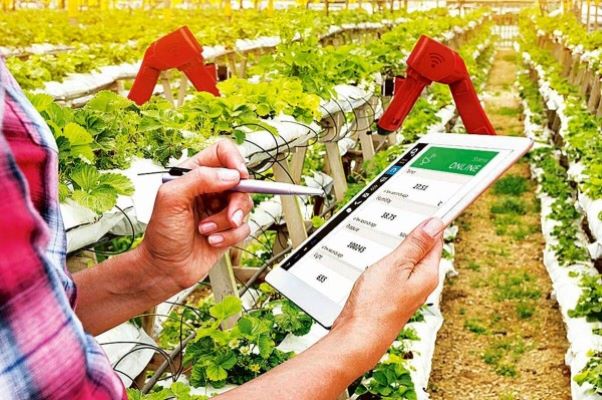The digital agriculture industry is undergoing a major transformation, fueled by emerging technologies like artificial intelligence (AI), big data, blockchain, cloud computing, etc. These forces are working together to revolutionize the way we grow, manage, and distribute food, with significant impacts on transparency, efficiency, and sustainability. Blockchain can integrate data from various sources like weather sensors, soil analysis, and satellite imagery to provide farmers with real-time insights on irrigation, fertilization, and pest control. AI systems can examine digital images taken by drones, agricultural robots, or farmers using a simple smartphone camera to detect pests and give concrete advice to agricultural workers on how to prevent their spread, treat affected plants, or mitigate the damage caused. At the same time, AI can analyze data on the behavior of livestock to detect abnormalities and identify potentially sick animals, thus allowing timely treatment. (Source: FAO and International Telecommunication Union Report, 2021).
Moreover, the pervasive nature, ease of use, and mobility of digital technologies are reshaping the landscape of agriculture and food production. Particularly in the agriculture and food sector, the proliferation of mobile technologies, remote-sensing services, and distributed computing is already enhancing smallholders’ access to vital information, inputs, and markets. This transformation is leading to increased production and productivity, more efficient supply chains, and reduced operational costs. Thus, this data-driven approach optimizes resource allocation, reduces waste, and leads to increased yields.
Monitoring & scouting category within the spectrum of operation segment is anticipated to exhibit the most rapid growth, boasting the highest Compound Annual Growth Rate (CAGR).
In the digital agriculture industry, monitoring and scouting are two crucial practices that leverage technology to gain real-time insights into the health and performance of crops. Monitoring and scouting are essential tools in digital agriculture, allowing farmers to proactively manage their crops, optimize resources, and maximize yield. These techniques, powered by various technologies like sensors, drones, and AI, provide farmers with real-time data and insights to make informed decisions. By continuously collecting and analyzing data, farmers can make informed decisions that lead to a healthier, more productive, and sustainable farm operation.
Moreover, the integration with the SAS (Satellite Agriculture Solution) system enables precise resource allocation, optimizing the use of water, fertilizers, and pesticides based on the specific needs of different parts of the field. As stated in the Artificial Intelligence for Agriculture Report of the International Telecommunication Union (ITU), and FAO (2021), XAG has mobilized its partners and service providers to serve 40 million hectares of farmland with smart agtech, contributing to a total increase in crop yield of 3 490 000 tonnes. Farming labor costs have also been substantially reduced while removing occupational health risks for field workers. Thus, the integration of AI, as exemplified by XAG’s initiative, showcases the transformative potential of digital agriculture. It not only addresses specific challenges in monitoring and scouting but also contributes to the overall efficiency, sustainability, and productivity of modern farming practices.
Peripheral technology is dominant within the technology segment of the market.
Peripheral technologies in digital agriculture are essentially the sensors, actuators, and other devices that collect and transmit data about the farm environment and the crops or livestock being raised. These devices can be mounted on drones, tractors, irrigation systems, or even directly on plants or animals. They can measure a wide range of factors, such as soil moisture, nutrient levels, temperature, humidity, pest and disease pressure, and plant growth. Platforms and apps that provide real-time data on soil health, crop conditions, and weather patterns are in high demand. This allows farmers to optimize irrigation, fertilizer application, and pest control, leading to increased yield and reduced costs.
SA agriculture thrives in the digital age: NAMPO 2024 embracing connectivity for sustainable growth
The dominance of peripheral technology in the digital agriculture market is expected to continue in the coming years. As the cost of sensors and other peripheral technologies continues to decline, and as farmers become more comfortable with using data to make decisions, the adoption of these technologies is likely to accelerate.
What Industry Leaders Can Do
Digital technologies are changing the agriculture industry. Frankly speaking, there are not too many other options left to boost production and feed the world in the upcoming decades.
Most of the challenges of adopting technology can be overcome with financial investments, step-by-step training and education. But working together is also essential here. For example, I’ve found that interacting with agricultural communities worldwide to get real-time feedback can have a similar effect to enhancing digital literacy or getting more funds.









